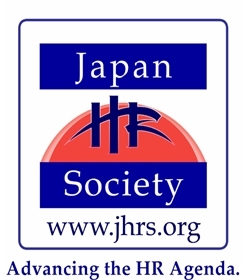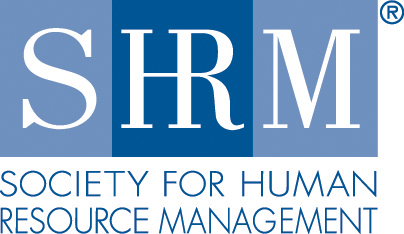Uniken, Japan Universal Design Research Institute
http://www.npo-uniken.org/ (Japanese only)
The non-profit organization Uniken currently has staff and volunteers on the ground in the disaster-affected areas conducting relief activities, launching a project dubbed “the Japan Universal Disaster Relief Headquarters."
(1) The Japan Universal Disaster Relief Headquarters, or Japan Universal, has deployed a large number of volunteers to the disaster-affected areas. In Kesennuma for example, volunteers are piloting and staffing three privately owned helicopters to conduct relief activities. Other volunteers left Tokyo at 6pm on March 16th in two 2-ton trucks loaded with relief goods. They arrived at their destination in Yamagata at dawn on the 17th, roughly 12 hours later. Without stopping to sleep, they continued onwards to Kesennuma, an area affected by the tsunami. Many other volunteers are conducting similar activities. Currently, only trained volunteers with significant disaster relief experience are entering the disaster zones. Japan Universal is certified by the Japanese Cabinet Office and has been issued a government permit to use the highways to transport goods out of Tokyo.
(2) What is now becoming clear is that *the circumstances **of this disaster are completely unlike those of the Great Hanshin Earthquake.** * In the wake of that disaster, the local governments of Hyogo Prefecture, Kobe City and Ashiya City were still functioning. For that reason, the local authorities were able to distribute relief materials and funds from the Red Cross to affected areas. This became the grounds for the widespread directives to “send money, not goods” and “coordinate [all volunteer activities] through the Red Cross.”
In this disaster, however, the local authorities who would normally coordinate aid have been completely destroyed. As a result, the Red Cross, Japan Self-Defense Forces, and firefighter rescue teams are unable to cover the entire disaster area. *This has lead to a dire situation:* *pockets of survivors taking refuge together in isolation, undiscovered by the**authorities, and completely without water, food, fuel, electricity, or telephone access.* *For that reason, the rules that applied to the Great Hanshin Earthquake do not apply to this disaster.*
(3) After the earthquake, Ms. Yokoo of Japan Universal conducted a 48-hour survey of the disaster area beginning in Yamagata Prefecture. This is what she found (note that the following contains upsetting descriptions.)
An NPO discovered an isolated evacuation center with 50 survivors undiscovered by the authorities. They alerted the Self-Defense Forces, but another tsunami wave came and the entire group got wet. When the
Self-Defense Forces rushed in 30 had already died. If dry clothes had reached the group in time, their deaths might have been averted.
A welfare facility already inhabited by many elderly residents took in 130 survivors, but there was no food or water. In an area with 200-300 infants, there was only one can of infant formula. Survivors searched desperately to scavenge goods but continued to be buffeted by dangerous aftershocks and tsunami waves.
Recovered corpses cannot legally be cremated without an autopsy, but the volume of bodies has overwhelmed the police. Nonetheless, the Miyagi Prefectural Police are laboring tirelessly to contend with the situation.
Once the Self-Defense Forces or rescue squads have located groups of survivors, they are able to establish distribution routes and provide food and water. The problem is that there are isolated survivors in locations yet undiscovered by the Self-Defense Forces. NPOs are now working in disaster zones to uncover these groups and alert the Self-Defense Forces or police.
Right now, *the people in the disaster zones have no dry clothing.* They are wet and cold and in danger of freezing to death. In the Great Hanshin Earthquake, donations of used clothing became a burden in the disaster zone, but this situation is different. *There is an urgent need for dry clothing, used or otherwise.*
The greatest problem is the availability and transport of goods. We do not have sufficient materials and there is no gasoline to transport what we do have.
(4) Our disaster relief systems never anticipated the simultaneous occurrence of so much damage over such a great area. For that reason, nobody has a complete picture of the situation. There is too much talk of “the lessons we learned in Kobe” on the TV and Internet. The lessons we learned in Kobe do not apply to this disaster. We must recognize that the situation is completely different this time.
*(5) What we can do in Tokyo and elsewhere to help the disaster victims:* We need to reach out to the disaster zones by providing goods and the means to transport them.
Goods can be donated either by individuals or by corporations. Because of the Hanshin Great Earthquake, many corporations maintain the conviction that goods must only be channeled through the Red Cross. For this reason, they have hesitated to donate goods to NGOs. This does not reflect a lack of willingness to help, but rather a lack of understanding of the current situation. The Red Cross alone cannot distribute sufficient materials. NPOs must step forward to fill in the gaps.
Donations from individuals
The Japan Universal website cites a need for two types of goods, “survival goods for isolated areas of severe damage” and “dry clothing and blankets for isolated areas of severe damage.” Other materials will also be
collected, but the group asked that contributors focus on life-saving materials at this time. Donations should be packaged in clear plastic bags or clearly marked paper boxes.
Donating aid materials to the disaster victims
Current donation center location:
Relief Materials Collection Service
Japan Universal Disaster Relief Headquarters
3-21 Kanda Nishiki-cho, Chiyoda-ku Tokyo, 101-0054
Please drop off donations at the wood deck on the 1st Floor.
Donations can be brought directly to the collection center (this option is preferable.) If you prefer to send packages by a delivery service, please be sure to send an e-mail detailing the content of your donation. Workers may be unable to respond to your e-mail but know that your contribution is appreciated.
Regarding transport
At this juncture, the organization asks that untrained volunteers do not travel to the disaster zone. This is the rescue stage of the operation, not the rebuilding stage, and those involved may be expected to collect
rotting bodies from disaster sites. There is also a shortage of fuel with which to reach the affected areas.
If you have gasoline tanks and are able to drive to disaster zones and back to deliver it, the organization would like your help transporting materials. Japan Universal can arrange a driving permit in such cases.
--
Uniken, Japan Universal Design Research Institute





